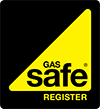Everyone has a heating system in their home, but not everyone knows what a heating system does or the type of system they have.
Knowing about your heating system is always helpful, especially in times of crisis, as it means you can explain with confidence to a heating engineer or plumber the problems you are experiencing with your system.
Your central heating system moves in a constant circle which pushes hot water from your boiler, to the heating elements and back again to accumulate more heat. The same water is locked within your system, and loops around again and again, unless you flush your heating system.
The basic steps;
Combi Boiler – Is the most widely used boiler in UK homes to date. The reason for this is that it provides a heating system for your hot water and central heating demands instantly.
System Boiler (Also known as ‘Sealed System Boiler’) - With this system you do not need a large water storage tank to keep your heated water stored like a conventional boiler. This frees up a large amount of space in a home, which is beneficial when every square foot counts. This system needs a water cylinder, which is much smaller than the storage tank and can be placed neatly in your property.
Conventional Boiler (aka ‘Open Vent System’ or ‘Regular Boiler’) - These boilers have both a cylinder and a tank. Not many homes install new Conventional boilers. This style of boilers is good for homes that need hot water in several different places at one time because with any other system the demand for hot water in several areas of the home reduces pressure and causes the hot water to fluctuate, often burning the unsuspecting person in the shower.
All of the below make up a basic central heating system.
The boiler is the heart of your central heating system; it delivers different amounts of heat energy depending on the size of the boiler and fuel type used.
Boilers can come in many different sizes, which will be determined by how many kilowatts (kw) the boiler requires to heat your home. To achieve the correct sized boiler many calculations are carried out by a professional heating engineer. Such calculations will be determined by the size of your property, the construction of your building, materials used to build your property and finally how you will be using the system, as everyone uses it differently.
Everyone thinks boilers only use gas to create the heat for your home but this isn’t the case. There are several different fuels that are available and can be used.
Compatible fuel types are listed below:
What is a ‘heating emitter’? These are the components that actually expel heat into your desired rooms from your boiler. These can consist of:
Pipes are what feed the central heating system from the boiler to the heat emitters. Pipe work materials can be either copper of plastic. Plastic pipe work is becoming more and more popular as it’s easier for the heating engineers and plumbers to fit. Plastic is a push-fitting joint system, whereas copper pipes need soldering, which can be risky because if they aren’t soldered correctly it will lead to leaks. The sizing of pipes will depend on the boilers and what fittings the pipes are joining, the common sizes for pipe work are 28mm, 22mm and 15mm but they can range anywhere from 8mm to 35mm.
The expansion tank is often talked about but if you asked people what it actually is and what it does, not many people would be able to tell you.
An Expansion tank is used to relieve pressure within the pipe work. When water is heated within the pipes it causes the hot water to expand by 4%. This expansion of the water needs to go somewhere to relieve the pressure in the heating system or the system will explode. The job of the expansion tank is to relieve this pressure.
Yes you have guessed it; this is a failsafe against the failure of the expansion tank. If the tank fails to do its job it releases pressure through its valve.
Aka water tank. This is normally located in a loft or a high place and is only used on an open heating system. The water tank has two jobs;
A pumps job is to push hot water around your heating system. Without the pump the water will just sit still in the pipes. The location of a pump is usually placed inside your boiler or in your airing cupboard.
This valve chooses which direction to push the hot water. The valve has a motor within which controls the flow of heated water to either the central heating system or the hot water system.
Controls are the brain of the system, they control all the sensors and valves. There are several controls attached to a heating system see below;
As you can see installing a new heating system in your home can be quite a daunting prospect, which will need professional guidance to make the correct decision for the type of home you live in.
Complete the form below and one of the Plumbcare.com team will get back to you as soon as possible.






"Excellent installation service."